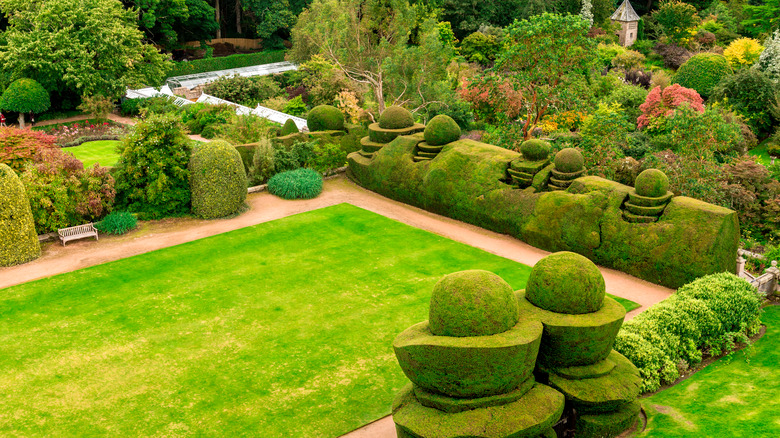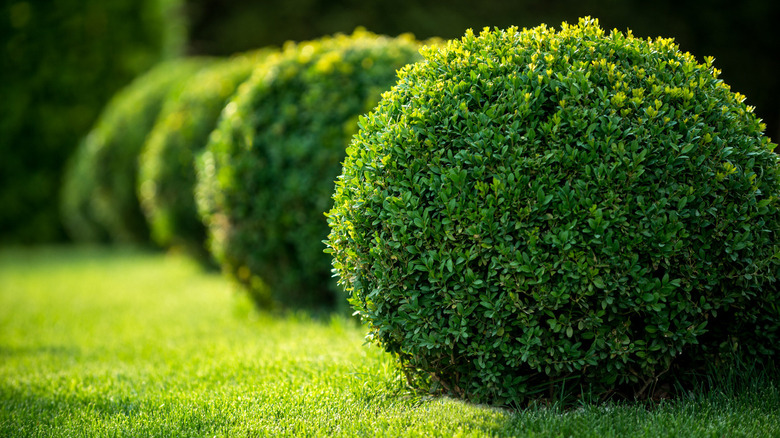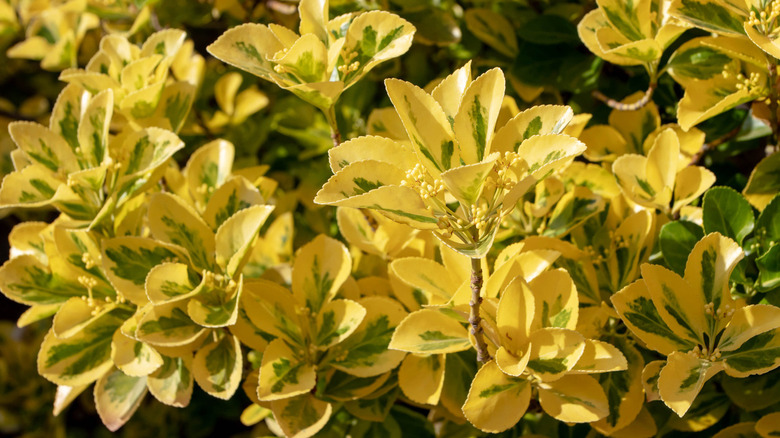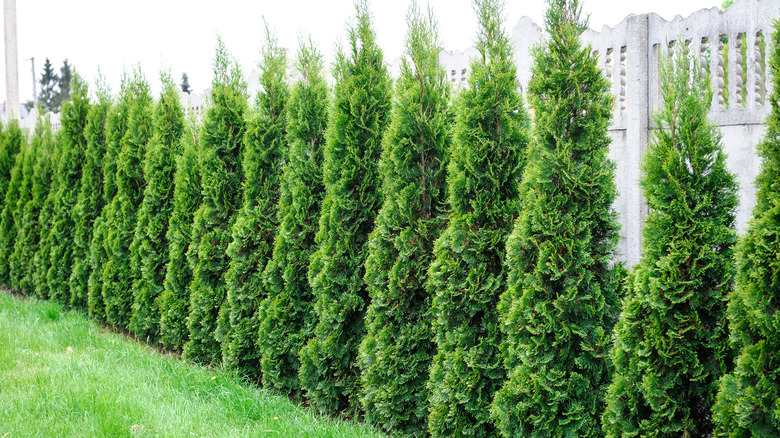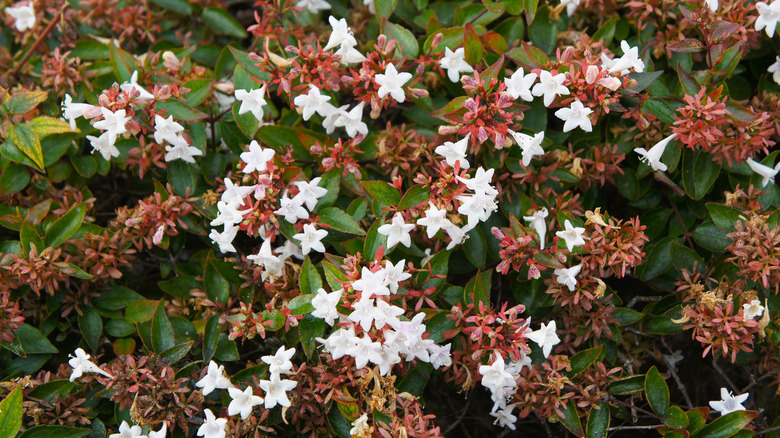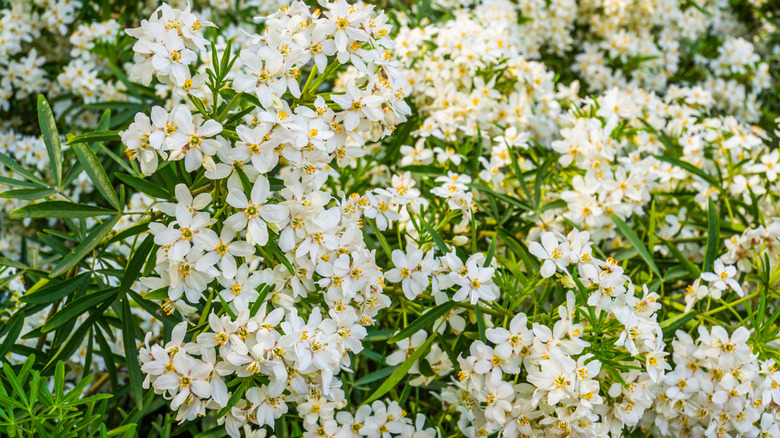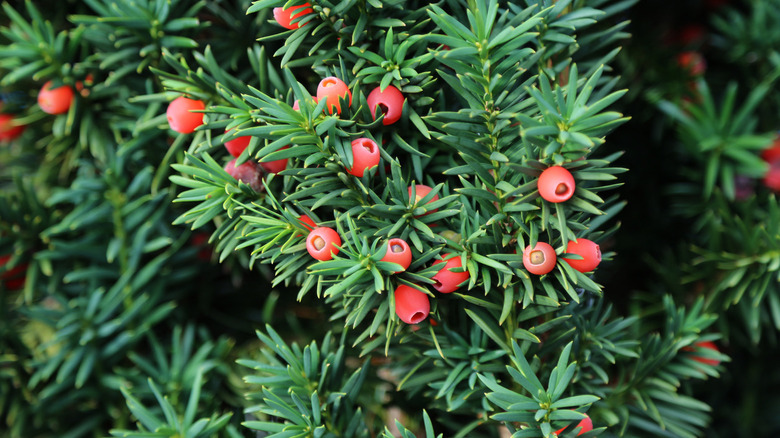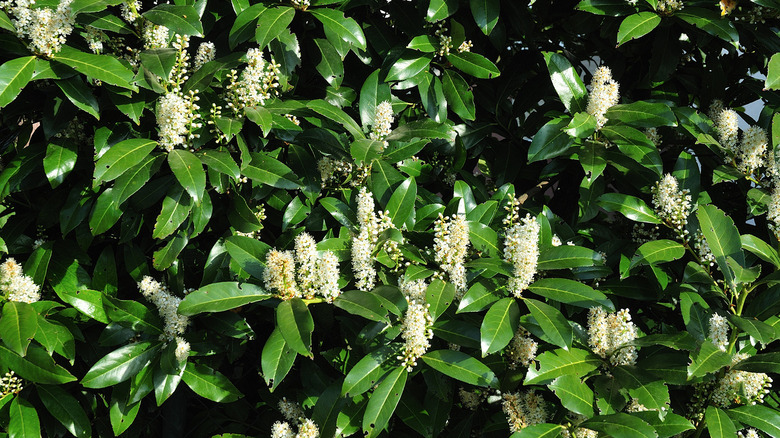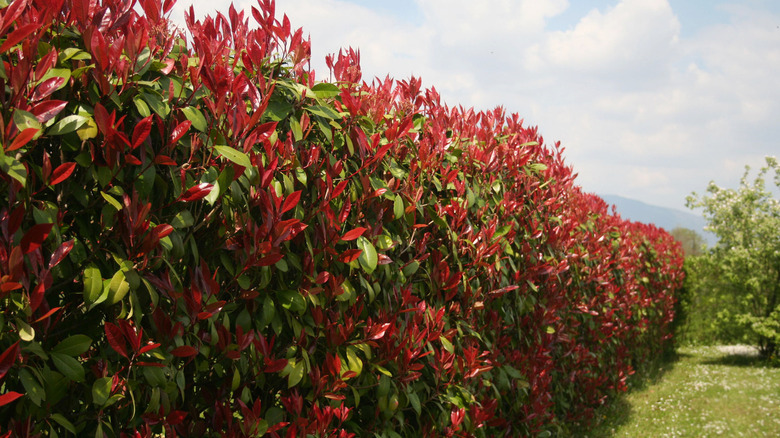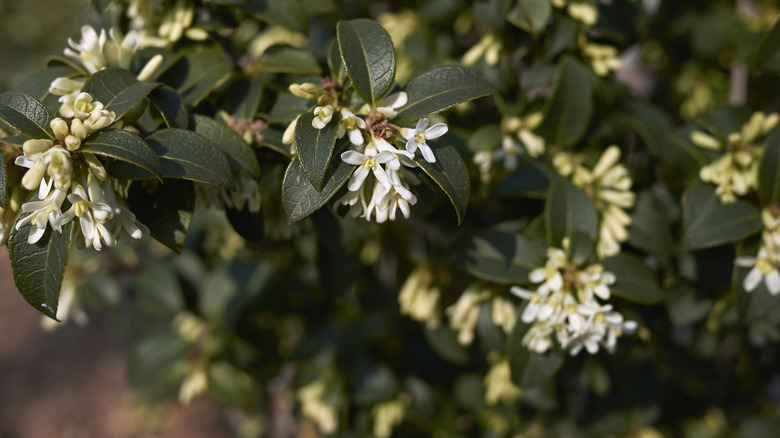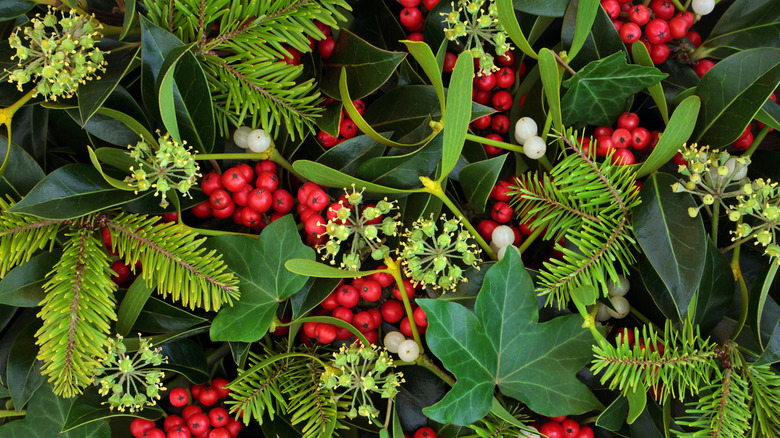10 Low-Maintenance Hedges You Can Plant In Your Yard
While so many plants have the potential of growing into a hedge, you should realize that not every one is the same. Some require way too much attention and care to grow, not to mention the fact that not everyone has the time or the patience to deal with needy plants. The good news is that growing a nice enclosure or a screening around your property doesn't need to be complicated and troublesome. In fact, with a careful selection of plants, you can have a live fence that provides you with privacy, beauty, and noise-absorbing characteristics without the unnecessary hassle, per Sound Fighter.
However, it is also important to mention that this doesn't mean you will escape the common hedge-related chores like pruning and cutting back. Remember, keeping the live fence around your home looking tidy means you have to do some extra handy work. With that in mind, take a look at the following low-maintenance hedge plants that will allow you to cut down on your garden tasks.
Boxwood
The Boxwood (Buxus spp.) is a good shrub that grows into a beautiful hedge. It is a bushy plant with neat leathery leaves that are also deer-resistant. The beauty about the Boxwood is that it can withstand shearing and pruning, which makes it easier for you to trim it into whatever shape you have in mind. According to the University of Maryland Extension, this plant is also ideal as a foundation plant or as a backdrop.
Bloom Season: Spring
USDA Growing Zone: 5 to 9
Growing Conditions: Full to partial exposure
Soil Type: Loamy
Size: 2 to 8 feet tall and wide
Silver king
The silver king (Euonymus Japenicus), also known as the Japanese Spindle, is another great option when it comes to low-maintenance hedge plants. It features dark green leathery leaves that may have variegated color schemes depending on the soil fertility, mentions Oregon State University. This particular plant will provide all-season visual interest, not to mention that it grows in most soils.
Bloom Season: Late spring, early summer
USDA Growing Zone: 6 to 9
Growing Conditions: Full to partial exposure
Soil Type: Grows in most soils
Size: 5 to 6 feet tall and 2 to 3 feet wide
American arborvitae
The American arborvitae (Thuja occidentalis 'Smaragd') is a popular dwarf shrub loved for its color that remains the same all seasons through. It grows in a narrow and upright manner, making it a great option for hedges. While some varieties can grow tall quite fast, the American arborvitae takes up to 20 years to fully mature. According to the Missouri Botanical garden, this plant can also find use as a foundation or background plant.
Bloom Season: Non-flowering
USDA Growing Zone: 2 to 7
Growing Conditions: Full to partial exposure
Soil Type: Moist, well-draining soil
Size: 12 to 14 feet tall and 3 to 4 feet wide
Glossy abelia
If you are looking for an easy, semi-evergreen shrub that will also grace you with beautiful flowers when the time is right, then consider the glossy abelia (Abelia x grandifolia). When left unpruned it can grow into an unsightly mound, but with some controlling and cutting back it creates a beautiful hedge. The University of Florida Extension advises thinning the top of the hedge to allow light to reach the foliage below.
Bloom Season: Spring to summer
USDA Growing Zone: 5 to 9
Growing Conditions: Full to partial exposure
Soil Type: Moist, well-draining soil
Size: 6 to 8 feet tall and 6 to 8 feet wide
Mexican orange blossom
Care for a drought-tolerant hedge? If you do, look no further than the Mexican Orange Blossom (Choisya Ternata). This shrub grows in most conditions but particularly loves hot climates. According to the North Carolina University Extension, this plant doesn't require a lot of pruning, making your work relatively easy. It also blooms into beautiful clusters of fragrant white flowers.
Bloom Season: Summer to fall
USDA Growing Zone: 8 to 10
Growing Conditions: Full sun exposure
Soil Type: Moist, well-draining soil
Size: 4 to 8 feet tall and 4 to 8 feet wide
Yew
If you are interested in a more formal and subtle hedge for your property, the yew (Taxus) might be a good match. The yew shrub is dense for much-needed privacy and also produces red berries that are often associated with Christmas. This particular plant is easy to maintain, needing just a little pruning to hold the desired shape. However, the University of Nebraska-Lincoln cautions against providing the yew shrub with too much moisture.
Bloom Season: Non-flowering
USDA Growing Zone: 2 to 10
Growing Conditions: Grows in all conditions
Soil Type: Moist, well-draining
Size: 4 to 60 feet tall and 4 to 20 feet wide
English laurel
The English laurel (Prunus laurocerasus) is an evergreen shrub that can also grow like a tree. They grow tall and are loved for their sweet-smelling blooms. Other than that, this particular plant is quite tolerant to most conditions making it quite easy to care for and maintain. The English laurel's opaque and dark green foliage makes it a great choice for hedges, via the North Carolina State University Extension.
Bloom Season: Spring
USDA Growing Zone: 4 to 9
Growing Conditions: Full to partial shade
Soil Type: Rich, well-draining
Size: 10 to 20 feet tall and 8 to 11 feet wide
Photinia
Thinking of growing a hedge with ornamental foliage? Then you will love the photinia (Photinia x fraseri). Your privacy hedge needs not be boring with just regular green color; this particular shrub is popular for its ornamental bright red leaves. Photinia blooms with flowers that are not pleasant for most gardeners, so pruning before blooming might be necessary, as noted by Clemson Cooperative Extension.
Bloom Season: Spring
USDA Growing Zone: 7 to 9
Growing Conditions: Full to partial shade
Soil Type: Loamy, well-draining
Size: 10 to 15 feet tall and 5 to 8 feet wide
Burkwood osmanthus
The Burkwood Osmanthus (Osmanthus x burkwoodii) is a slow-growing and well-behaved shrub that only needs pruning only when it gets too big. It is quite hardy and will tolerate most soils including clay. Also, according to Orgon State University, this particular plant has tall and dense growing habits, making it a good candidate for growing as a hedge plant.
Bloom Season: Spring
USDA Growing Zone: 6 to 8
Growing Conditions: Full to partial shade
Soil Type: Tolerates all soils
Size: Up to 8 feet tall and wide
English holly (Ilex Aquifolia)
The English holly (Ilex Aquifolia), sometimes referred to as the Christmas holly, is a perennial shrub associated with the festivities. While it grows relatively slowly, it has the ability to become a tall tree. Nonetheless, you can easily control its height by trimming it into a short hedge of any height. The English holly also has berries that when ripe attract birds and other pollinators, as noted by North Carolina State University.
Bloom Season: Summer
USDA Growing Zone: 5 to 9
Growing Conditions: Full to partial shade
Soil Type: Neutral, well-draining
Size: 30 to 50 feet tall and 15 to 25 feet wide
